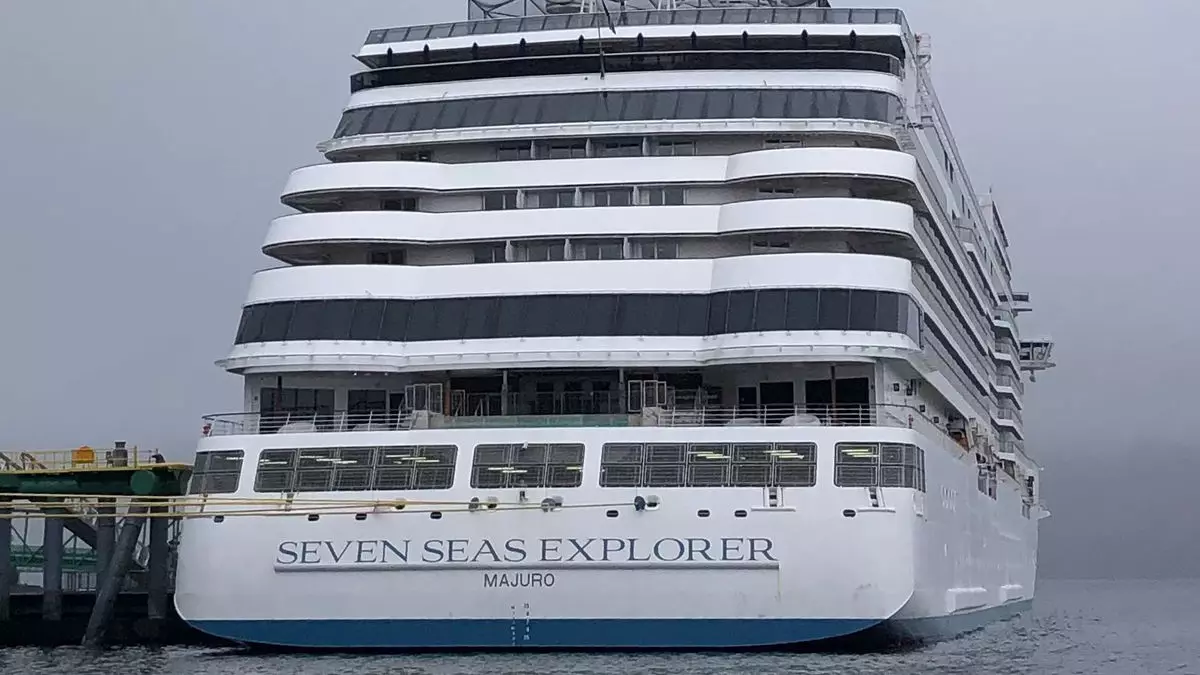The Seven Seas Explorer, a standout of the Regent Seven Seas Cruises fleet, was once heralded as the epitome of maritime luxury when it made its grand debut nearly nine years ago. As the dust of its initial fanfare settles, we take a profound look at how this floating palace has not only maintained its allure but has also evolved in an ever-competitive luxury cruise landscape.
The Regent Suite aboard the Explorer made headlines upon launching, largely due to its staggering 4,400-square-foot footprint, which earned it the title of the largest suite at sea. Today, the suite continues to amaze with its lavish appointments such as the grand view-facing electronic console that provides access to navigational data, ensuring that guests remain as informed as they are pampered. However, what was once a symbol of unrivaled opulence has gradually become part of a larger narrative. With the introduction of sister ships, the Seven Seas Splendor and Seven Seas Grandeur, which offer similarly appointed suites, the distinction of the Regent Suite has dulled. The perception of exclusivity, so critical in the luxury sector, has been challenged by the dilution of the experience across multiple vessels.
While the suite still radiates sophistication through its gold accents and onyx paneling, guests are now seeking differentiation beyond mere size. Luxury in cruise travel today hinges on experiences, and the conversation around onboard art collections curated by noted figures like Frank Del Rio has shifted from being an anchor for marketing to becoming a mere complement to the overall experience. The onboard characteristics of the ship echo the importance of adaptation in luxury, where maintaining relevance is more crucial than showcasing extravagance.
The current ethos at Regent seems to gravitate towards an all-inclusive value proposition rather than an overt display of luxury. Guests frequently prioritize experiences and conveniences over visual elements. The narrative no longer revolves around extravagant artwork or opulent lounging areas; rather, it concentrates on the quality of the services offered and the seamlessness of the cruise experience. This shift signifies a maturing in consumer preferences, where travelers are more inclined to seek memorable experiences, culinary delights, and informative enrichment programs rather than getting lost in the bling of extravagance.
An evident leader in culinary experiences on the ship is the pan-Asian Pacific Rim restaurant, where innovation meets delectable presentations. Dining options have become a focal point of the journey, highlighting how culinary mastery can surpass visual opulence. Interestingly, experiences such as the no-reservation Sette Mari at La Veranda have generated buzz, showcasing how even wait times can add anticipation to meals rather than discomfort.
Another cornerstone of luxury cruising lies in the unique destination experiences offered, steering clear of generic cruise stopovers. During a recent voyage to Alaska, interactions with local history experts and nature documentaries served to enrich the cruise experience well beyond the onboard offerings. The addition of enlightening excursions, such as wildlife spotting with guarantees of sightings, aligns with a growing trend in luxury travel that emphasizes authentic connections with destinations over simply checking boxes in travel itineraries.
The advancements in port infrastructure, like the enhanced NCLH dock in Ketchikan and the Icy Strait Point cruise port in Hoonah, have also refined how guests engage with their surroundings. Such improvements allow for smoother transitions from ship to shore and heighten anticipation for immersive experiences, presenting cruise companies like Regent as not just providers of travel but as curated experiences.
As the Seven Seas Explorer plays a significant role in Regent’s narrative, it is striking to recognize this vessel as a pivotal point in the cruise line’s history. The vision established under Del Rio is evident in the forthcoming vessels slated for release, indicating that Regent is committed to maintaining its status as a leader in luxury cruising. It’s remarkable how the industry has transformed, with the Explorer now being part of a broader conversation that includes fleet growth and adapting to evolving market demands.
With the introduction of subsequent ships, Regent has adeptly positioned itself at the forefront of the luxury market, merging history with innovation. As it faces new competitors and shifting consumer preferences, the ongoing commitment to quality—whether through artistry, experiences, or gastronomy—will determine the lasting relevance of the Seven Seas Explorer in the luxury cruise sector. The delicate dance of balancing exclusivity and accessibility may ultimately define the legacy of this maritime jewel.


Leave a Reply